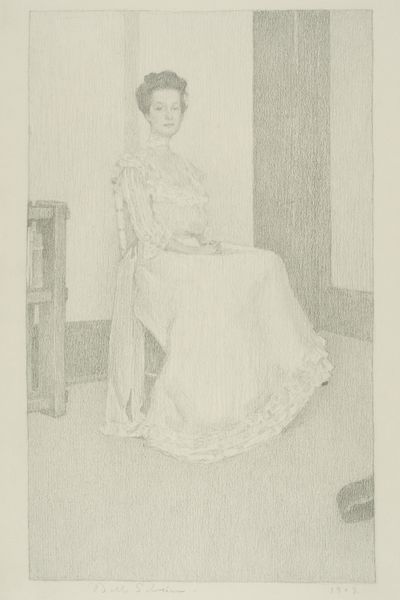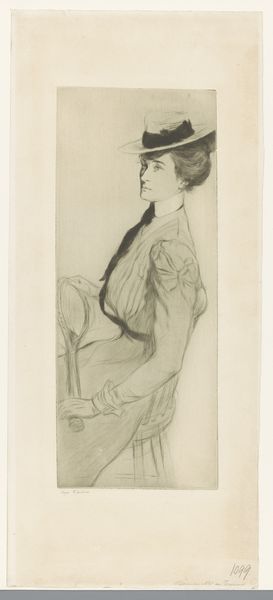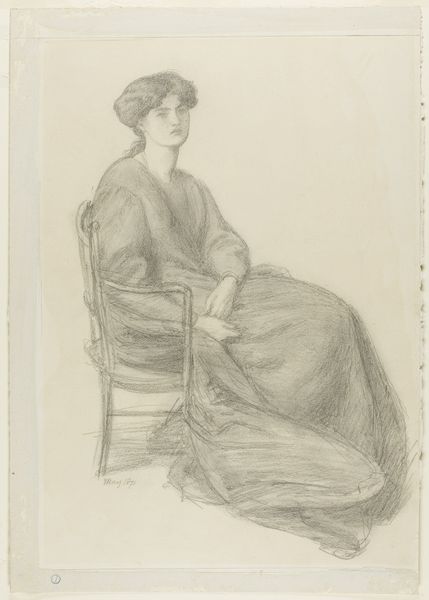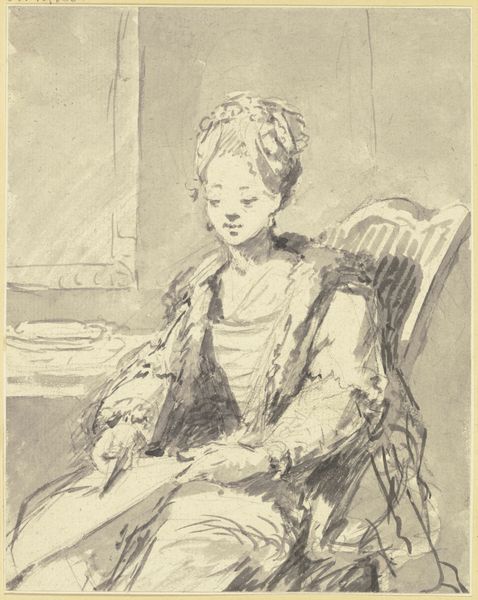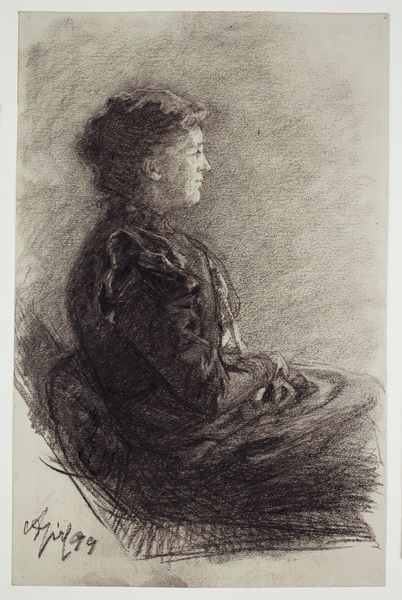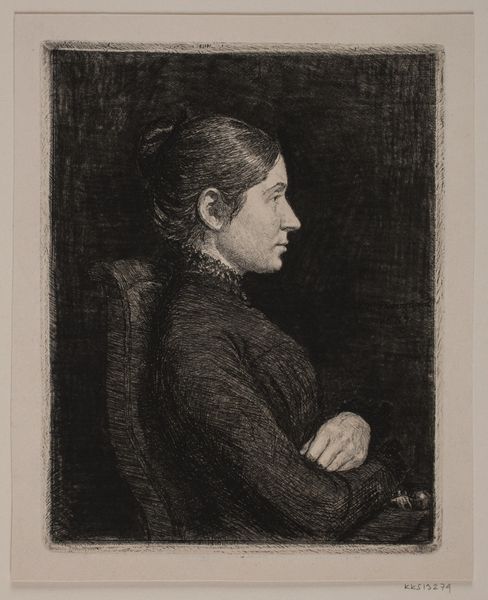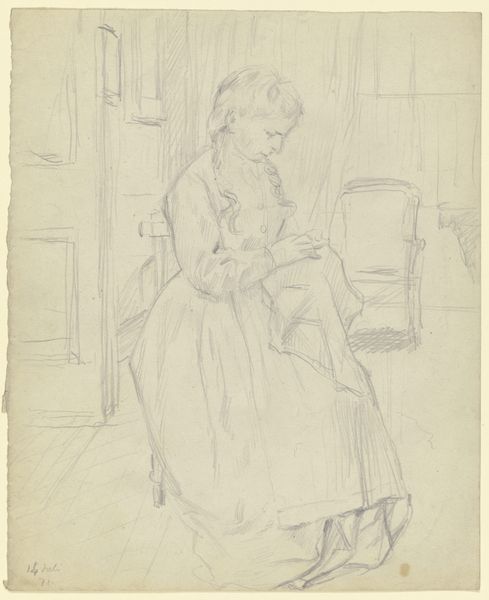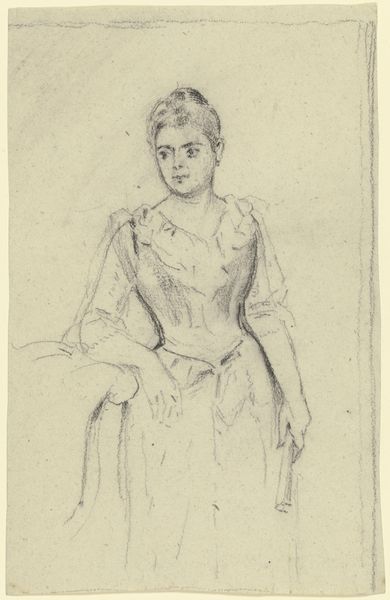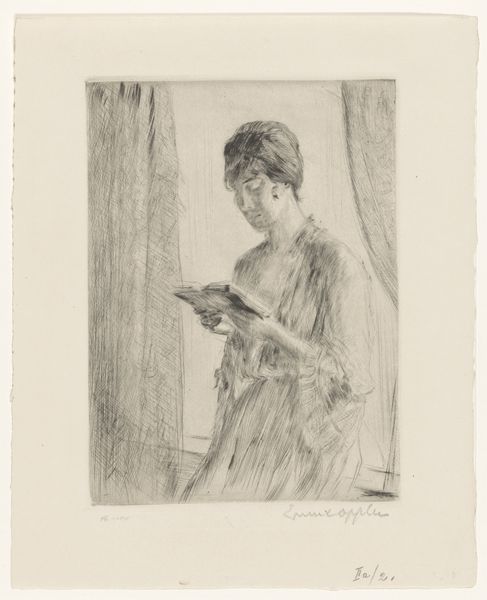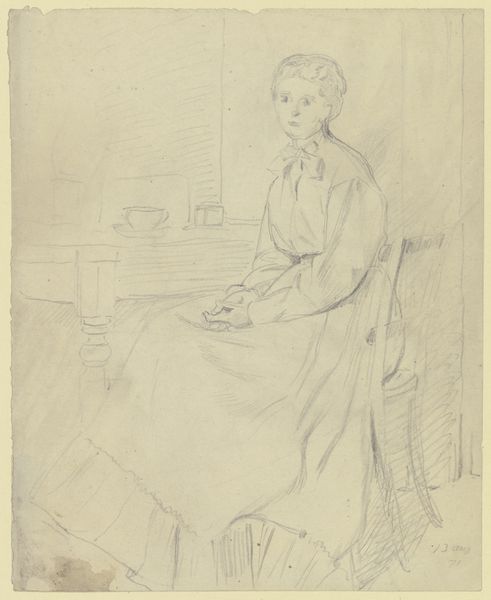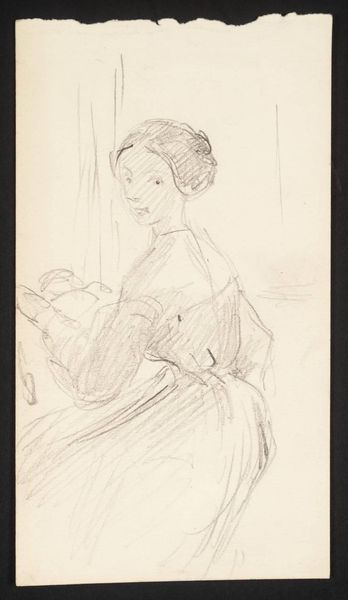
Dimensions: 203 × 219 mm (image/plate); 206 × 221 mm (sheet)
Copyright: Public Domain
Editor: This is Donald Shaw MacLaughlan's "Drypoint Number Three: Portrait" from 1909, currently at the Art Institute of Chicago. The fine lines almost vibrate on the paper! What's striking to me is how he’s captured a real sense of stillness, even with such active mark-making. What stands out to you? Curator: The success of this piece, and indeed drypoint as a medium, lies precisely in that contrast you identify: the tension between delicate detail and a sense of immediacy. MacLaughlan coaxes considerable tonal variation from such simple means, wouldn't you agree? Editor: I do! But how does that variation function? Curator: Observe how the closely hatched lines around the figure create a contained composition. The lines establish volume, yet remain undeniably linear. It's a delicate balancing act between description and abstraction, representational content and the stark beauty of the medium itself. The blank space amplifies the focus on the meticulously worked areas. Editor: So it's about the relationships between all the marks? Not really about...her? Curator: To a degree, yes. We can consider her presence almost as a formal device. The composition isn't driven by conventional ideals of beauty. MacLaughlan explores form, texture, and tone within the constraints he sets for himself. Editor: I see... that’s not where my eye immediately went, but thinking about the visual language that way is super interesting. Curator: The work almost dares us to move beyond narrative, inviting instead close attention to the artful and austere means of its creation. Editor: That tension is a cool perspective, I can better appreciate how those formal qualities shape the feeling and mood of the portrait.
Comments
No comments
Be the first to comment and join the conversation on the ultimate creative platform.

